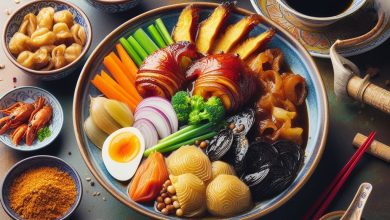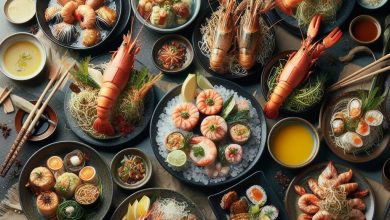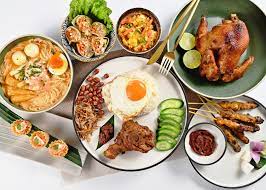Street food in Singapore
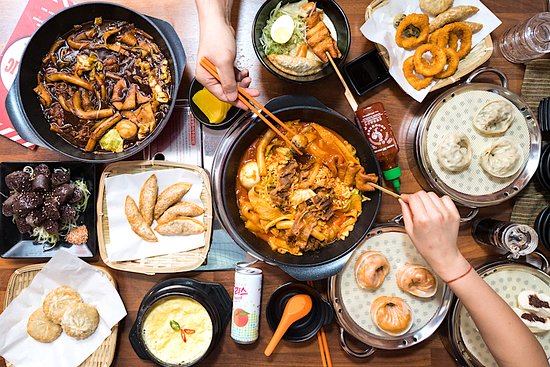
When I was getting ready for a business trip to Singapore last summer, I was frightened by two things: that they are very strict with cleanliness – throwing a candy wrapper or a cigarette butt is almost punishable by prison, and that it is very expensive there. Both rumors turned out to be somewhat exaggerated. The city is really clean, but not sterile, there is litter – even in the brand new Gardens by the Bay there was a plastic bottle under a bush.
The people behave carefully, but without fanaticism. Photographer Yuri Palmin and I were the only people who rushed to pick up a napkin from the ground if it suddenly flew off our table. As for the high cost, this is especially true for those who live there. A tourist can choose: check into the Raffles Hotel for a thousand dollars and order a tasting set at the Waku Ghin restaurant for half that amount, or find a more modest hotel and eat not in restaurants (or not always), but on the street.
In the case of Singapore, this does not involve any hardship or danger. Street cooks were organized into numerous hawker centers or food centers—pavilions with a roof but no walls. The principle is the same as in food courts of shopping centers: food is sold in different kiosks, tables are shared. This is not some kind of fast food, but the most normal Singaporean cuisine, that is, a crazy mixture of Malay.
Chinese and Indian, interspersed with other neighboring traditions. Dishes cost an average of $2–5, the portions are generous and promise not only satiety, but also a lot of emotions, from bewilderment and fear to joy and admiration. You need to choose the counters where the line is longest, and also look at yelp and foursquare – there people discuss their favorite chefs.

There are many food centers in Singapore, but if you come for a few days, those in the heart of the city will be enough for you.
This is the oldest market in Singapore, it has existed since 1825, however, earlier they sold not only food here. The openwork metal pavilion, similar to the buildings of Gustave Eiffel, is a landmark in itself. LauPaSate has all the main Singaporean dishes: laksa spicy soup, black pepper crab, bak kut the pork rib soup, chicken rice, etc., but you should try the national satay dish here, because not all centers have it.
These are small skewers like Japanese yakitori, with a variety of ingredients. They are cooked outside on an open fire in hellish smoke. We didn’t manage to find out who has the best, because the representatives of the stands cling to you already at the entrance, and you don’t have time to come to your senses, as you have already ordered everything.
This center became a favorite because it was located not far from our New Majestic Hotel, which, by the way, was very nice. It’s a rare occurrence to see a small historic building with a modern design instead of a new skyscraper. At Maxwell we tried what is said to be the best chicken rice in town, an excellent carrot cake that is actually made from radishes, and a variety of strange gelatinous sweets.
Carrot cake and omelette, breakfast dishes. Carrot cake is actually a chaotic soft mess of eggs, radish flour, peppers, garlic and onions – strange, but delicious.
Yuri Palmin and chicken rice – seemingly ordinary boiled chicken with rice, but everything is much more complicated: the chicken is boiled in meat broth, and the rice in chicken broth, and everything is mutually saturated with juices and aromas
It is located near Maxwell, but since there are many attractions between them, the distance is measured not in meters, but in hours. Financiers from neighboring offices eat here, so the audience looks very smart, and the queues at lunchtime are huge. Locals advise trying here fish soup or fish porridge – gray watery porridge with fish. Somehow we didn’t get it – there were more appetizing things.
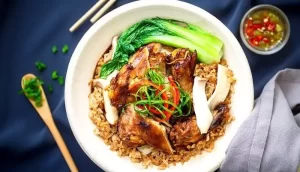
Chinatown is generally one continuous eatery, but it is especially fun here in the evening on Smith Street and neighboring streets. Lanterns are lit, tiles and braziers are turned on, tables are set up in the middle of the street and a nightly feast begins. Here you can try cheap Singaporean specialties – black pepper crab and chilli crab. It’s better to take the first option, it’s not very spicy. And you can buy bakkwa with you – caramelized meat, similar to leaf marmalade.
In the evening, the lights on Smith Street are lit, the stoves and braziers are turned on, tables are placed in the middle of the street and the feast begins.
In the evening, the lights on Smith Street are lit, the stoves and braziers are turned on, tables are placed in the middle of the street and the feast begins.
In addition to the hawker center, there are many cheap cafes in Singapore that can easily be classified as street food – people sit in them not so much inside as outside. Of course, in three days we were not able to study the issue thoroughly, but here are a few proven and conveniently located.
A small chain of Indian restaurants, the most central one (212 Telok Ayer Street_)_ functions as a canteen during the day. There is a queue for a beautiful thali that costs a few dollars.
One of Singapore’s specialties is bak kut teh, which translates as “tea with bones.” Fortunately, this is again a deception, as with carrot cake – the pork ribs and other innards are cooked not in tea, but in a spicy broth. This “bakuteshechnaya”, as Yuri Palmin affectionately called it, is the most canonical, discovered by Mr. Song back in 1969. If you are afraid of kidneys, liver, tails and other stomachs, take soup with ribs or tenderloin.

